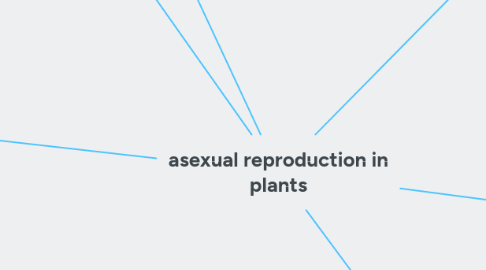
1. Parthenogenesis
1.1. Natural
1.1.1. Honey bee
1.1.1.1. Queen Lays EGG
1.1.1.1.1. Unfertilized
1.1.1.1.2. Fertilized
1.1.2. Aphids
1.1.2.1. OVA
1.1.2.1.1. Grow into ♀ (2N)
1.1.2.2. Sexual rep.
1.1.2.2.1. ♂
1.1.2.2.2. ♀
1.2. Artificial
1.2.1. Starfish & Frogs
1.2.1.1. Egg Activation
1.2.1.1.1. Δ
1.2.1.1.2. Irradiation
1.2.1.1.3. Some Salts
1.2.1.1.4. Agitation
1.2.1.1.5. Pricking
1.2.1.1.6. Electric shock
2. ADVANTAGES
2.1. Can be preserved
2.1.1. For a long time
2.1.1.1. And remain alive
2.2. it can be used
2.2.1. solve food problems
2.2.2. shorten time to grow crops
2.3. Propagating
2.3.1. Rare plants
2.3.2. desirable
2.3.3. more resistant strains
3. as Hydra & Sponges
4. tissue culture
4.1. Carrors
4.2. Tobacco
5. regenration
5.1. Less developed
5.1.1. star fish
5.1.1.1. Breeders tried to control It
5.1.1.1.1. By cutting
5.1.1.1.2. Now they burn them
5.2. Developed organisms
5.2.1. Cartesian and amphibians
5.2.2. higher animals
5.2.3. Planaria
5.2.3.1. Transverse
5.2.3.1.1. each part regenerate
5.2.3.2. longitudinally
5.2.3.2.1. two parts grow only
6. Expirement
6.1. Small Pieces
6.1.1. Conical Flask
6.1.2. Coconut milk
6.1.2.1. contains :
6.1.2.1.1. All plant hormones
6.1.2.1.2. nutriens
6.2. Single cells
6.2.1. Using the same method
7. depends on the food given
8. Bread mold fungus
9. Algea
10. Fungi
11. Sporogony
11.1. Some
11.2. Ferns
11.3. Multicellular
11.3.1. Mushroom
12. Binary Fission
12.1. Protozoa
12.1.1. Perimicium
12.1.2. Amoeba
12.1.2.1. Unsuitable conditions
12.1.2.1.1. Chitinous Cyst
12.1.2.2. When conditions get better
12.2. Simple
12.3. Bacteria
13. Budding
13.1. Unicellular
13.1.1. as yeast
13.1.1.1. BUD appears
13.1.1.1.1. I.On Mother cell
13.1.1.1.2. II.One migrates to BUD
13.1.1.1.3. III.may :
13.2. multicellular organism
13.2.1. BUD GROWS
13.2.1.1. As cellular protrusion
13.2.1.1.1. Interstitial Cells
14. Coat
15. steps
15.1. I. released from
15.1.1. IMP. spores with thick Coat def.
15.1.2. Mother plant
15.1.2.1. rips sporangulum
15.1.2.2. released in the air
15.2. II. suitable medium (humidity)
15.3. SPORES
15.3.1. I.Absorb H2O
15.3.2. II.Coat rupture
15.3.3. III.Several division
15.3.4. New individual
